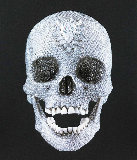

Delicate Space 1990 22x15
Saul White
Original Painting : Acrylic on paper
Size : 22x15 in | 56x38 cm
Motivated Seller Reduced
-
🔥Acrylic on Canvas $$$$$$$
Year1990
Hand Signed
Condition Excellent
Not Framed
Story / Additional InfoPrivate collection. Purchased from artist at private showing.
Certificate of AuthenticitySaul White
LID44993
Saul White - United States
Art Brokerage: Saul White American Artist: b. 1932-2003. Saul White was born in Boston, Massachusetts to Russian-Jewish immigrants. His career as an artist, musician, and poet began in Los Angeles where, during high school, he befriended artist Wallace Berman, often considered the spiritual leader of the Southern California Beats. In his senior year White developed a serious interest in music and landed a position as record librarian at KFWB, one of Los Angeles's earliest jazz radio stations. After serving in the Korean War, White abandoned his career in the music industry to become a painter. He studied at the Otis Art Institute on a fellowship in the mid-1950's and took a storefront studio in Venice Beach on Ocean Avenue, which became a gathering place for artists Berman, Edward Kienholz, and John Altoon. Venice was then Los Angeles's counterpart to the North Beach Beat scene, and White began writing poetry and became a regular at Lawrence Lipton's Sunday evening "literary salons," where poetry readings and wide-ranging discussions were attended by poets such as Stuart Perkoff, Bruce Boyd, Tony Scibella, and Charlie Foster. The rhythms of White's jazz-inspired work caught the attention of Kenneth Rexroth and Kenneth Patchen, who invited him to read with them in North Beach. Although White continued throughout his life to write poetry, he concentrated on painting and printmaking. In 1958, he moved to New York, where he befriended the luminaries of abstract expressionism Willem de Kooning and Franz Kline and became a familiar name in Greenwich Village artistic circles. In the early 1960's de Kooning invited him to live and work with him in East Hampton, where he helped build the older artist's studio. It was at this time, under the mentorship of de Kooning, that White became convinced of the permanent viability of expressive abstraction, regardless of the dictates of fashion. In the ensuing decades, even though painting itself became anachronistic in the eyes of the art world, White continued to explore his chosen style of abstraction. Listings wanted.





















































